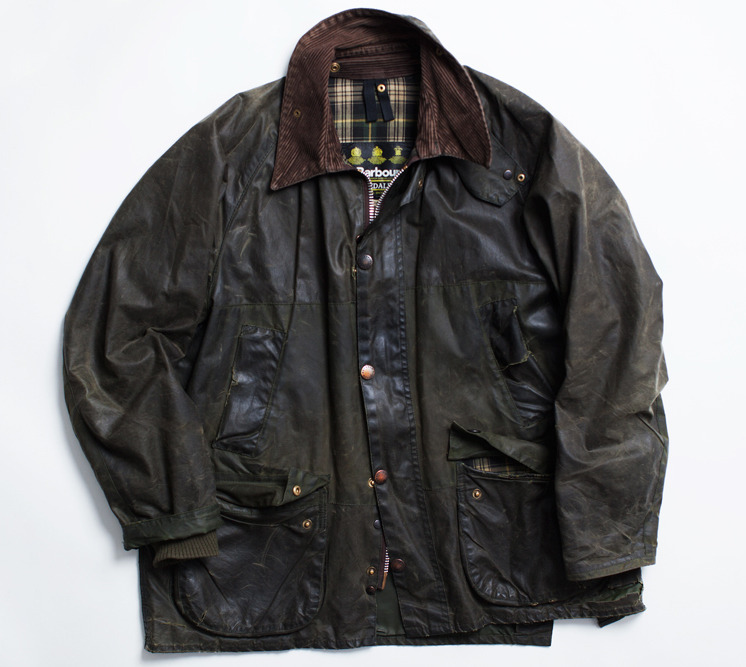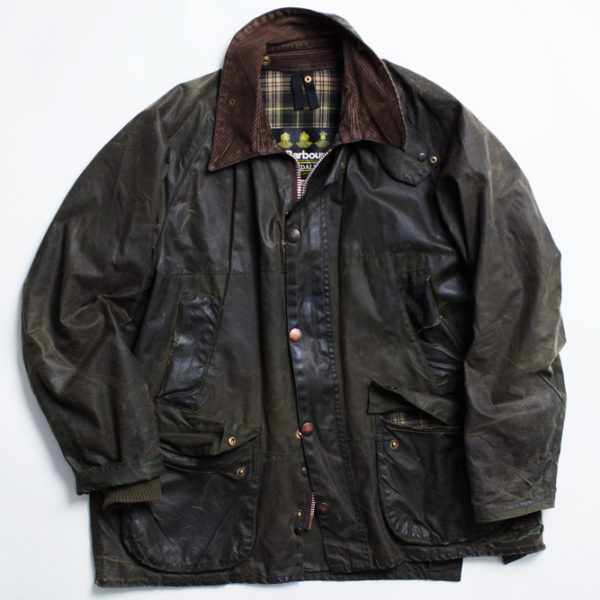
It’s been five years since Barbour came into fashion with the rise of the heritage trend. Despite them being a bit overexposed in some downtown circles, their waxed cotton coats still remain one of the more classic and handsome outerwear pieces you can wear in the colder months. You can pair one with a chunky sweater and some jeans for a casual look, or layer it over a tweed sport coat or gray flannel suit for something more refined.
If you don’t already have a Barbour jacket, we’ve put together an A-to-Z buyer’s guide on what you should consider before buying.
Which Model Should You Get?
- Bedale: If you only plan to wear with jacket casually – that is, with sweaters and jeans – try the Bedale. It’s a short equestrian jacket with internal sweater cuffs and dual side vents. The slightly shorter length won’t cover the hem of a sport coat, but it’ll may feel more natural given your other outerwear.
- Ashby: Basically a contemporary version of the Bedale, built with longer sleeves, a slightly longer body, and an overall slimmer fit. Good for people who want something that looks a bit more updated.
- Beaufort: This shooting jacket comes with a big game pocket at the back and a slightly longer body (about 2.5 inches). The extra length makes this a bit more versatile, as you can wear it with or without a sport coat. Downside: the adjustable Velcro cuffs aren’t as comfy as the Bedale’s sweaters cuffs, and the ventless back means the jacket can ride up when you put your hands in your trouser pockets. For a heavier, more rugged version of the Beaufort, search eBay for the now-discontinued Moorland.
- Border: A couple of inches longer still, this jacket ends right above your knees. Good if you want extra rain protection, but the added length makes this less versatile than the Bedale or Beaufort. On the other hand, if you’re super tall, the Border may be your model if you want to wear your jacket with a sport coat. For an even heavier version, check out the Northumbria.
- International: A belted motorcycle jacket popularly associated with Steve McQueen. I find these look best with gray sweatshirts, worn-in jeans, and hefty boots.
- Sapper: If you want to stand out from the Barbour-wearing crowd, try this military-style field jacket, which comes with a stowaway hood and an adjustable drawstring waist. Perfect for days when you might face a bit of light rain.
- Liddesdale: The company’s signature quilted jacket. Not as heavy duty as the models listed above, but relatively affordable and wearable in all but the coldest of conditions.
- Chelsea: Another quilted jacket model, but this time built with slanted, flapped pockets instead of patched. If you think the Liddesdale looks too much like a liner, this might be for you.
What are the Available Colors?
Barbour’s most iconic colors are green, but there are two kinds – sage and olive. Sage is a deep forest green, whereas olive (which is Barbour’s original color) is a bit more brown. One thing to note: sage has a slightly shinier, “wetter” look at first, although the finish quickly wears off. Some also say that olive develops a more interesting patina over time, as the cotton isn’t as heavily processed before waxing.
Other available colors include black, navy, dark brown, and sometimes tan. Although, if this is your first coat, I recommend sage or olive (and mostly olive).
Other Details to Look Out For
- Sizing: Sizing can be tricky. Classic, core-line models such as the Bedale, Beaufort, and Border fit somewhat full, but you’ll want to take into account whether you plan to layer a sport coat or suit jacket underneath. Go true-to-size if you do; size down one if you don’t. Also, note that the seasonal models, fashion-forward lines, Heritage collections, and SL-fits already come trim, so buy your regular size. When in doubt, purchase from a place that allows for easy exchanges and returns.
- Alterations: The core-line coats are notorious for having short sleeves, so you’ll want to factor in $75 to $100 for alterations. You can get those done by sending the jacket back to Barbour or dropping it off at your local Orvis. See here for a list of available services.
- Provenance: If the country-of-manufacture matters to you, note that the core-line models are made in the UK, while most everything else is made in other countries (often Eastern Europe). Personally, I wouldn’t let the outsourced coats deter you – these are all wonderful jackets.
- Beware of Fakes: There are a ton of fake sites on the internet claiming to sell Barbours for cheap, but they’re just trying to steal your credit card information. Buy only from trusted sources. I recommend End, Oi Polloi, and Country Attire in the UK; and Orvis, O’Connell’s, Unionmade, North River Outfitter, and Nordstrom in the US.
- Consider eBay: As always, your cheapest source will be eBay, but note that second-hand Barbours can come with an old, musty smell that’s hard to get out. Be aware of what you’re buying.
(photo via The Sartorialist)
